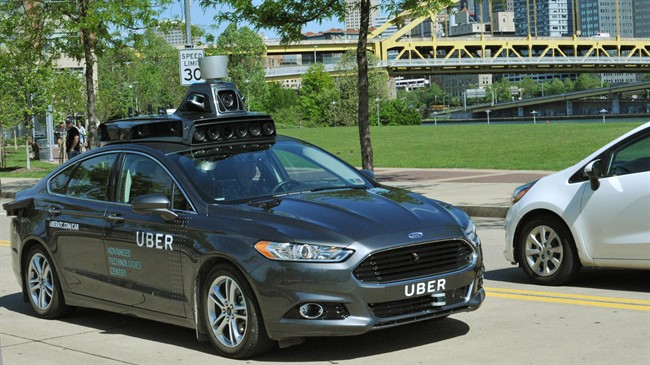As autonomous vehicles dominate the conversation about how technology is replacing full-time employment, its effect on law enforcement is being considered by the Ontario Provincial Police. The OPP will be livestreaming a presentation they’re receiving on self-driving cars at their headquarters on Thursday in Orillia.

Brian Ursino is the director of law enforcement at the American Association of Motor Vehicle Administrators and an expert on autonomous vehicles. He will be giving the presentation at OPP headquarters. He spoke with OPP Sgt. Kerry Schmidt about the future of autonomous vehicles in a live Periscope broadcast.
Ursino says the next step in the evolution of autonomous vehicles in the consumer market will actually skip ‘level 4’ autonomous vehicles which are being used provisionally by Uber near the University of Toronto. Ride-hailing giant Uber has undertaken a mapping project that will supplement their driverless car technology research hub located in Toronto.
Autonomous vehicles that don’t get distracted by their smartphones and can’t drive intoxicated prompts the question: Who needs a steering wheel?
“The final answer may vary by manufacturer but indications I’m getting is that most level 5 vehicles won’t have any controls at all. There will be no steering wheel, pedals,” Ursino said.
The current semi-autonomous vehicles you may have already seen are considered “level 3” which means the driver can essentially engage an “autopilot” in certain situations, allowing the operator to take their hands and feet off the vehicle’s controls. A level 4 vehicle can operate independently of the driver under any circumstances, within a defined boundary. The defined boundary is the only thing that distinguishes a level 4 from a level 5.
Given the ravages of winter sweeping southwestern Ontario, autonomous vehicles could theoretically reduce collisions and fatalities on major routes like the 400-series highways. Ursino warns that poor weather conditions can make these technologies unreliable.
“These vehicles are loaded with various technologies whether it’s radar, LiDAR, cameras and all three of those technologies operate at different levels of efficiency in inclement weather but none of them are fail-safe, none of them — at least today — can overcome all of those challenges,” he said. “These are just some of the obstacles and challenges that the engineers are working on now to overcome.”
The Autonomous Vehicle Integration Network opened in Stratford earlier this month with the province kicking in a cool $80 million over the next five years. Their number 1 objective, as stated on their website is to “commercialize connected and autonomous vehicles and transportation and infrastructure system technologies.” The facility is intended to bring together researchers and automotive industry experts in order to facilitate further advancements in the field.
You won’t be able to buy a self-driving car for another seven years at the earliest, according to Ursino. He says that experts believe it could even be 20. With the potential to save billions of dollars in the shipping and logistics industry, southwestern Ontario is poised to get in on the ground floor of how people and goods are transported.
There will be a live broadcast of Ursino’s presentation on driverless technology to the OPP on Thursday afternoon at 12 p.m. More details can be found through the OPP’s Twitter, Facebook, and Periscope accounts.








Comments